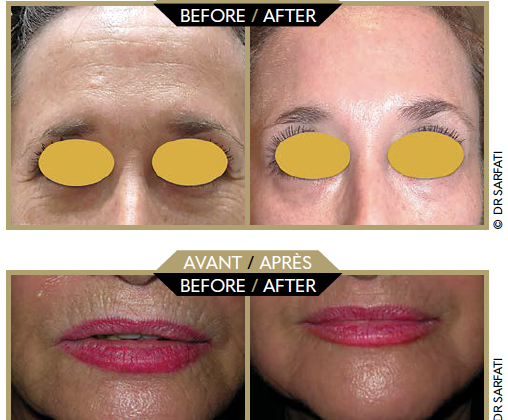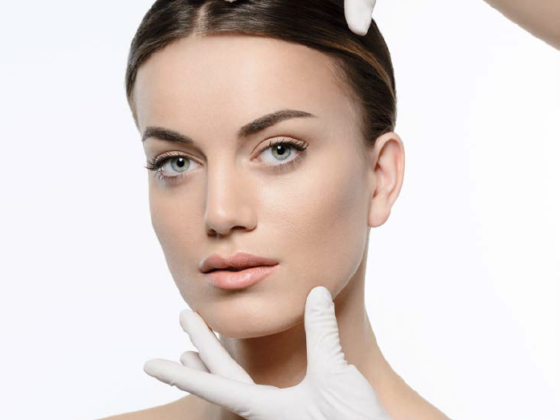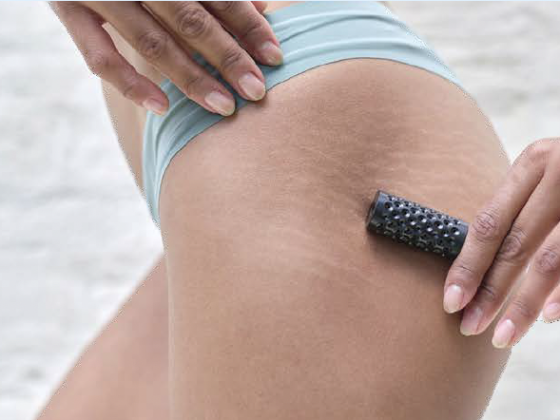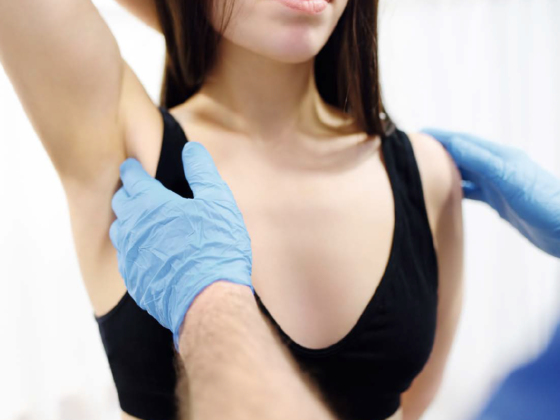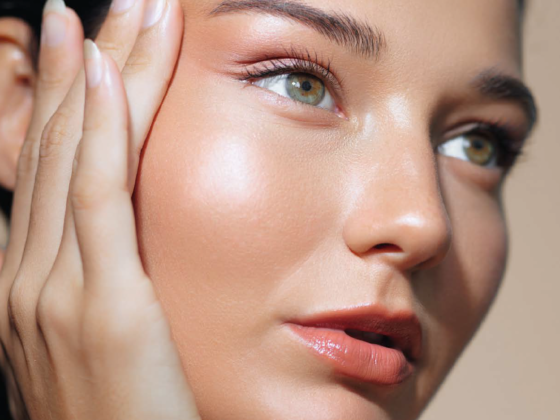By Dr. Barbara Hersant
The effectiveness of injections of platelet concentrates combined with hyaluronic acid (Cellular Matrix®) in treating vulvovaginal dryness in patients who have had breast cancer.
Forty-five to 57% of menopausal women suffer from discomfort due to vulvovaginal atrophy (VVA) which is still sometimes called “the genitourinary syndrome of menopause” . This trophic vulvovaginal issue causes pain, irritation, itchiness, bleeding, leucorrhoea, dyspareunia (in 25% of cases), secondary infection and urinary problems that affect a woman’s sex life and intimate relationships.
VVA is also associated with sexual disfunction in 55% of cases, with a loss of libido. Vulvovaginal dryness and irritation are caused by the hormonal changes associated with oestrogen depletion, which leads to a loss of collagen in the vulvovaginal mucous membrane and the vulva’s mucous membrane being less able to retain water, as well as a reduction in the quality and quantity of secretions and adipose tissue. The vaginal wall becomes thinner, less elastic and pale, as well as becoming smoother. The mucosal epithelium, which is oestrogen-dependent, is rich in glycogen fermented by lactobacilli, which reduces the vaginal pH. The normal pH of the vaginal is lower than 4.7. An increased pH is a sign of vaginal atrophy and dryness. The lamina propria is mainly composed of collagen and elastin fibres and contains a dense plexus of small blood vessels, lymphatic vessels and nerves. In this way, collagen and elastin help control the biomechanical properties of the vaginal tissue.
In addition to the menopause, other situations can lead to VVA, namely breast cancer (50 to 75% of patients). A number of studies have shown that breast cancer treatments are to blame: hormone therapy and chemotherapy due to a lack of sex hormones; breast surgery, radiotherapy and chemotherapy due to the physical and/or psychological damage caused.

These patients are unable to have hormone replacement therapy, which is generally considered the go-to treatment for VVA symptoms. The usual treatment for these women are topical gels or vaginal suppositories (lubricant, hyaluronic acid, etc.) which only offer a short-term effect, even if they are regularly applied 2 or 3 times a week. In medical literature, it is reported that topical treatments have a significant impact on VVA after a month, but recent data is lacking. In order to be effective, the treatment instructions must be followed closely and the treatments must be applied daily. Nevertheless, their effectiveness is reduced once the treatment is stopped. Currently, we are seeing a boom in innovative VVA treatments (lasers, injections, etc.) based on bio-induction and regenerative medicine, which could be a new option for women who are unable to take hormone supplements.
For these patients, autologous platelet-rich plasma combined with hyaluronic acid (HA) could be an alternative or complement to other therapies.
The aim of this pilot study is to offer a therapeutic alternative to women who have had breast cancer and suffer from vulvovaginal dryness but cannot have any of the usual effective treatments (HRT, local hormonotherapy) by evaluating the effectiveness of this new strategy on VVA and the quality of their sex life.
Why the Cellular Matrix (PRP-HA)?
Because of its hydrating and healing properties, hyaluronic acid plays an important role in the tissue regeneration process, making it easier for a large number of cells to reach the damaged site, thus rebuilding an extracellular matrix that is capable of supporting the proliferation and differentiation of cells for tissue regeneration. In fact, HA is a sugar (polysaccharide) with a high molecular weight, that is made up of a repeated pattern of glucuronic acid and N-acetylglucosamine units. It controls a number of cell processes (inflammation, immune reaction, scarring, angiogenesis). Its very large polymer structure enables it to hold on to large quantities of water (1,000 times its own weight) and ions to maintain the tissues’ hydration and turgescence. Highly metabolically active, it also regulates the differentiation, migration and proliferation of the cells. The half-life of hyaluronic acid in the skin is under a day, and it is particularly abundant during the regeneration and reparative processes. The quantity of HA in the skin reduces with age (0.3mg/mg of protein in adults and 0.07mg/mg in elderly subjects). Hyaluronic acid is present in all tissues, especially in the vulvar and vaginal tissues. Therefore, gynaecological HA is great for treating cases of vulvovaginal dryness or atrophy. Hyaluronic acid is a healing molecule that encourages dry, irritated mucous membranes to heal. A number of studies have shown the effectiveness of applying hyaluronic acid gel on symptoms of vaginal atrophy and dryness, and it can be considered a therapeutic alternative to hormonal treatments. In the last few years, platelet-rich plasma (PRP) has been widely used in the various medical disciplines, namely in ophthalmology, reconstructive surgery, orthopaedics and aesthetic medicine. The theory behind PRP treatment is its capacity to reproduce the natural cell-regeneration mechanisms thanks to the sequential release of various growth factors (platelet-derived growth factors, transforming growth factors β, epithelial growth factors, vascular endothelial growth factor, insulin-like growth factor, basic fibroblast growth factors), stimulating cell proliferation and differentiation, angiogenesis and the synthesis of a new extracellular matrix. An in vitro study showed a dose-response relationship between the concentration of the platelets and the proliferation of the human adult mesenchymal stem cells, the proliferation of the fibroblasts and the production of type I collagen.
An American study recently showed that autologous platelet-rich plasma significantly reduced sexual discomfort in patients suffering from dyspareunia. The authors suppose that, when the PRP is injected into the anatomical areas, it improves sexual receptiveness by releasing growth factors and cytokines that affect the angiogenesis, differentiation and activation of the pluripotent stem cells in the injected areas. In this way, PRP might improve vascularisation in the vagina, and restore and improve the physiological reactions of patients suffering from vaginal atrophy.
Preparation and injection of platelet concentrates combined with hyaluronic acid PRP-HA Cellular Matrix
A blood sample taken using a RegenKit-BCT-HA® (RegenLab SA, (RegenLab, En Budron B2, 1052 Le Mont-sur-Lausanne, Switzerland) was used to prepare the PRP combined with hyaluronic acid. The BCT-HA kit is made up of a sterile, non-pyrogenic tube for preparing a mixture of PRP and hyaluronic acid (40mg (2% w:v) of non-cross-linked hyaluronic acid in a tube, 1550 KDa) in the same proportions (2ml of PRP mixed with 2ml of hyaluronic acid). A 4ml sample of blood was taken for each patient. The RegenKit-BCT-HA® kit enables us to prepare the equivalent of 2ml of PRP with a total dose of 0.6 million platelets and a concentration of 1.6 times more platelets, that is 1.6 times more platelet-derived growth factors. After being put through a 1,500g centrifuge for 5 minutes, the PRP blended with 2ml hyaluronic acid was taken out using a 5ml syringe attached to the transfer device, and it was injected into the treatment site.
Injecting PRP combined with hyaluronic acid PRP-HA

Thirty minutes before injection, an anaesthetising cream (xylocaine® gel, Aspen Pharma Trading Ltd) was applied to the two treatment areas (vulva and vaginal wall). To ease any pain and anxiety, the doctor also offered the patient some MEOPA anaesthetic gas (Kalinox®) to inhale.
The injections were carried out calmly in the doctors’ surgery, in the gynaecological position on an examination table. Superficial injections (2 to 3mm deep) using a calibre 27G needle and a 1ml syringe were performed every centimetre in the first three centimetres of the vagina and the introitus that corresponds to the area damaged by dryness. The injection site was underneath the mucous membrane of the lamina propria.
Design of the study and methodology
This monocentric, open, comparative (before and after) pilot study was carried out in the plastic and reconstructive surgery department at Henri Mondor hospital.
The protocol of the study was approved by the Greater Paris VI ethics and welfare committee and authorized by the French National Agency for Medical Safety (ANSM).
The subjects of the study were asked to read and sign a consent form. They were all patients who had had breast cancer and presented VVD with a VHI of <15. 19 The Vaginal Health Index (VHI) was chosen to evaluate the negative effects of VVD and its improvement after the treatment had been carried out. The VHI is made up of five readings: elasticity, volume of fluid, pH, epithelial soundness and humidity. Each reading is classed from 1 (worst) to 5 (best). A VHI of <15 is the definition of vaginal dryness disorder and was therefore the criterium for inclusion.
The second inclusion criterium was the counter-indication of hormone replacement therapy (HRT): patients who had experienced hormone-dependent breast cancer that was in remission (more than 5 years after surgical treatment). The exclusion criteria were: being under 18 years of age, pregnant, breastfeeding, suffering from inflammation or a vulvovaginal infection in the vulvovaginal sphere (bacterial, viral or fungal), previous recurring cases of vaginal herpes (>6 per year), atrophic lichen sclerosus, and previous cases of vulvar, vaginal or cervical cancer. The patients had to see their gynaecologist before they could be included in the study, to check for any local infections or suspect lesions in the vulvovaginal sphere, with samples taken, if necessary, according to the clinical examination.
Results
Twenty patients took part in the study. All of them completed the study period. The patients were aged 60.8±5.5 with a BMI of 20.7±5.7. The patients had been menopausal for an average of 7.6 years.
The results showed that the average vaginal dryness score, evaluated using the vaginal health index (VHI) had significantly increased a month after treatment: the VHI went from 10.7±2.12 before treatment to 16.2±3.9 a month after treatment, p<0.0001. After 3 months the VHI had significantly increased to 18.35±2.7, and to 20.75±4.8 six months after treatment (p<0.0001). The percentage of patients with a VHI >15 was 80% after 1 month, 90% after 3 months, and after 6 months, 95% of patients presented a score of >15. Given that a score >15 means that the treatment was a success, our results show a clear improvement in VVA.19 Furthermore, the percentage improvement in vaginal health (VHI) was 34% after 1 month, 42% after 3 months and 48% after 6 months.
The volume of vaginal secretions had significantly increased 6 months after treatment (from 2.05±0.75 before treatment to 3.75±0.44 after 6 months) (p<0.0001). The elasticity and integrity of the epithelium had significantly increased (2.25±0.78 and 2.7±1.12 before treatment, 3.75±0.44 and 3.87±0.57, respectively, after 6 months of treatment) (p<0.00001). Hydration had also significantly improved, from 2.1±0.78 before treatment to 4.4±0.65 after 6 months of treatment (p<0.00001). In parallel, the vaginal pH measurement showed a significant drop in vaginal pH, which went from 6.42±0.52 before treatment to 5.6±0.57 after 1 month (p<0.0001), 5.17±0.44 at 3 months and 4.91±0.44 at 6 months (p<0.0001). These results show an improvement in the vaginal flora and increased hydration and secretion volume.
The results concerning the patients’ sex life – evaluated by the female sexual distress scale – showed a significant improvement in the patients’ sexual health. The average FSD score was 36.35±2.53 before treatment, and after 1 month the score had significantly lowered to 33.8±3.3, a 7% improvement (p<0.01), and at 3 and 6 months, the score continued to reduce significantly (respectively, to 30.45±4.53 showing a 16% improvement and to 30.15±2.47 showing a 17% improvement) (p<0.0001).
Patient satisfaction was evaluated using a VAS and the results showed that the patients were satisfied, with an average score of 7.05±1.69 six months after treatment. When answering the question, “Would you have these injections done again?”, 19 patients out of 20 said yes, to maintain the effects over the long term. With regard to their tolerance of the treatment, the average VAS pain score at the moment of injection was 5.46±1.98 and no unwanted side-effects were reported.
Our study showed that combining PRP-HA in injections for patients who had had breast cancer could improve vulvovaginal dryness and vaginal trophicity, with positive repercussions on their sex life. The 95% of patients with a VHI >15 six months after treatment demonstrate the treatment’s success. Regenerative medicine seems to be the new, promising therapy for patients suffering from vaginal dryness who are unable to undergo hormone replacement therapy.
Doctor Barbara Hersant 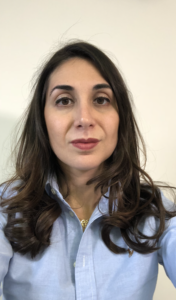
Maxillofacial and Plastic & Reconstructive Surgery Department Henri Mondor Hospital.






